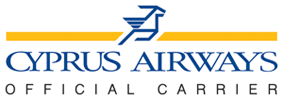.:. Invited Talk
Professor Ron Morrison
Talk: |
An Active Architecture Approach to Dynamic Systems Co-evolution |
Abstract |
The term co-evolution describes the symbiotic relationship between dynamically changing business environments and the software that supports them. Typically business changes create pressures on the software to evolve, and at the same time technology changes create pressures on the business to evolve. More generally, we are concerned with wide-informatic systems, which are assembled from parts that co-evolve with each other and their environment, and whose behaviour is potentially emergent. Typically these are long-lived systems in which dynamic co evolution, whereby a system evolves as part of its own execution in reaction to both expected and unexpected events, is the only feasible option for change. Examples of such systems include continuously running business process models, sensor nets, grid applications, self-adapting/tuning systems, peer-to-peer routing systems, control systems, autonomic systems, and pervasive computing applications.
Active architectures address the structural and behavioural requirements of dynamic co-evolving software by modelling the software architecture as part of the on-going computation, thereby allowing it to evolve during execution. This invited paper presents results on active architectures from the Compliant System Architecture and ArchWare projects. It will discuss the intrinsic nature of dynamic co-evolution and propose a model and a set of technologies, new and extant, to meet these intrinsic requirements. We introduce the ArchWare-ADL, a formal, well-founded architecture description language based on the higher-order typed π-calculus, that consists of a set of layers to address the requirements of dynamic co-evolving software. Illustrations of how the model and technologies may be implemented within ArchWare architecture description language (ADL) will be presented. |
Bio |
Ron Morrison has held the chair of Software Engineering at the University of St Andrews since 1985. He obtained a BSc degree in Mathematics from the University of Strathclyde (1967), a Diploma in Computing Science and an MSc from the University of Glasgow (1971), and a PhD for a thesis entitled “On the development of Algol” from the University of St Andrews (1979).
His research interests are in the areas of: software architecture including programming languages, architecture definition languages, reflective systems; dynamic system evolution, and process modelling; database management systems; distributed systems including termination algorithms, garbage collection and distributed object stores; sensor networks; and global computing including peer-to-peer architectures and pervasive computing.
From 1981-96, he worked extensively with Professor Malcolm Atkinson of Glasgow University on the integrating technology called Persistent Programming that aims to support concurrently accessed and potentially large bodies of data and programs throughout their lifetimes. The establishment of an integrated persistent environment that supports higher-order procedures yielded a new programming paradigm, called hyper-code, whereby source programs may include direct links to values that already exist in the persistent environment. The combination of hyper-code with another invention – type-safe linguistic reflection – facilitated type-safe dynamic evolution in persistent data and programs.
During the last 10 years Ron Morrison has worked with Professor Brian Warboys of Manchester University on the problems of defining software architectures that adapt to the observed needs of applications. We have coined the named compliant architectures to describe these systems. This work fed into further collaboration with Professor Flavio Oquendo of the University of South Brittany, France, on software architectures and reflective systems for architecting and engineering evolvable compliant software systems. The major results of this work, funded in the EC ArchWare project, include the formal specification of both the structure and behaviour of software architectures, integrated with technologies for decomposing, transforming, and recomposing active architectures to accommodate both autonomic and emergent dynamic evolution. Some of ArchWare results will be presented in this invited talk.
Other current projects with Dr Dharini Balasubramaniam, Professor Al Dearle, Dr Graham Kirby and Dr Stuart Norcross include ASA, “Secure Location-Independent Autonomic Storage Architectures” and DIAS-MC, “Design, Implementation and Adaptation of Sensor Networks through Multi-dimensional Co-design”.
Ron Morrison has published 10 books and about 130 research papers. He is a Fellow of the British Computer Society (F.B.C.S.) and a Fellow of the Royal Society of Edinburgh (F.R.S.E.).
|
| Personal Web Site
http://www-ppg.dcs.st-andrews.ac.uk/People/Ron/ |
|
|





